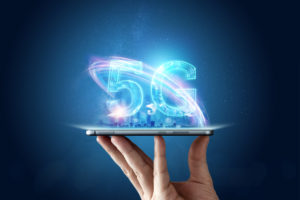5G Networks and Beyond: Exploring the Next Wave of Broadband Innovations

The Evolution of Mobile Networks: From 1G to 5G
The journey of mobile networks has been nothing short of revolutionary. From the beginning of 1G in the 1980s to the advanced 5G technology we have now, there have been many changes. Each generation has improved connection, speed, and features significantly.
1G, the first generation of mobile networks, introduced analog voice calls. It was a groundbreaking technology that allowed people to make calls while on the move. However, the capacity and security limited it.
2G marked the shift to digital technology, bringing improved call quality and the ability to send text messages. This generation also introduced basic data services, paving the way for mobile internet access.
3G was a game-changer, offering significantly faster data speeds and enabling mobile broadband. It allowed users to browse the web, send emails, and even stream video content on their mobile devices.
4G, also known as LTE (Long-Term Evolution), took mobile broadband to new heights. It offered much faster data speeds and lower latency. It also improved capacity. This allowed for high-quality video streaming, online gaming, and many other data-heavy applications.
We are now entering the 5G era. This new technology promises faster speeds, very low delays, and the ability to connect many devices. This new generation of mobile networks will change how we communicate and how industries work.
Understanding 5G Technology: Speed, Capacity, and Low Latency
5G networks are a big step forward in mobile technology. They offer three main benefits: very fast speeds, large capacity, and very low delay. These three key features work together to make a network that is faster and better than older ones.
When it comes to speed, 5G is in a league of its own. Theoretical peak data rates can reach up to 20 Gbps, which is about 20 times faster than 4G LTE.
In real life, you can expect speeds of 100-200 Mbps. This is much faster than most home broadband connections today. This means you can download a full HD movie in seconds rather than minutes.
Capacity is another area where 5G shines. It can support up to 1 million connected devices per square kilometre, compared to about 4,000 devices with 4G. This big increase in capacity is important for the growing Internet of Things (IoT) ecosystem. Billions of devices will need to connect and communicate at the same time.
Perhaps the most revolutionary aspect of 5G is its ultra-low latency. Latency refers to the time it takes for data to travel from its source to its destination. 5G aims to reduce this delay to as little as 1 millisecond, compared to 20-30 milliseconds for 4G. This near-instantaneous responsiveness is critical for applications like autonomous vehicles, remote surgery, and augmented reality, where even tiny delays can have significant consequences.
The Internet of Things (IoT) and 5G: A Perfect Match
The Internet of Things (IoT) and 5G technology form a symbiotic relationship, each enhancing the capabilities of the other. IoT stands for the large network of connected devices.
These devices collect and share data. They range from smart home appliances to industrial sensors. 5G provides the robust, high-capacity network infrastructure needed to support this burgeoning ecosystem of connected devices.
5G can support up to a million devices in one square kilometre. This allows for a level of IoT use that we could not imagine before.
This means you can have smart cities. In these cities, traffic lights, waste management, and public transportation work together. They connect and improve in real-time.
The low latency of 5G is particularly crucial for IoT applications that require instant responsiveness. In a smart factory, machines can talk to each other and respond quickly. This helps improve production and stops problems before they happen.
Moreover, 5G’s high bandwidth allows for more sophisticated IoT devices that can transmit larger amounts of data. This could lead to more advanced health monitoring devices, smarter agricultural systems, and more efficient energy grids. As 5G and IoT grow together, we can expect new applications. These will change many parts of our daily lives and industries.
Edge Computing: Bringing Processing Power Closer to Users
Edge computing changes how we process and store data. It will be very important in the 5G ecosystem.
Edge will bring computing power closer to the data creation location. This means it does not send all data to central cloud servers for processing. Instead, it processes data at the ‘edge’ of the network.
This approach offers several advantages:
- Edge computing reduces latency by processing data near its source. This greatly cuts down the time for data to travel. This is particularly important for applications that require real-time processing, such as autonomous vehicles or augmented reality.
- Improved reliability: Edge computing reduces reliance on a centralised cloud, making systems more resilient to network disruptions.
- Enhanced privacy and security: Processing sensitive data locally reduces the risk of data breaches during transmission.
- Bandwidth optimization: By processing data at the edge, only important information goes to the cloud. This helps reduce network congestion.
5G networks, with their high bandwidth and low latency, are ideally suited to support edge computing. They can manage the higher data traffic between edge devices. This allows for the fast response times needed for real-time applications.
As 5G and edge computing mature, you can expect to see more responsive and efficient applications across various sectors. In smart cities, traffic management systems can use data from many sensors in real-time. They can adjust traffic lights and suggest different routes to reduce congestion quickly.
Augmented and Virtual Reality: Transforming Experiences with 5G
Augmented Reality (AR) and Virtual Reality (VR) will change how we interact with the digital world. 5G is essential for unlocking their full potential. These immersive technologies require quick processing and transmission of a lot of data. This makes them great for using 5G’s high bandwidth and low delay.
In the realm of AR, 5G enables more sophisticated and responsive overlays on the real world. Imagine walking down a city street.
You see real-time information about businesses, historical sites, and your friends’ locations. You smoothly integrate this information into your view. With 5G, these AR experiences can be more detailed, more accurate, and more responsive than ever before.
VR, on the other hand, can leverage 5G to create more immersive and social experiences. High-quality VR content requires enormous amounts of data that 5G can transmit quickly and easily. This means you can enjoy ultra-high-definition virtual worlds without lag or buffering. This makes the experience feel more real and engaging.
Some potential applications of AR and VR powered by 5G include:
- Education: Virtual field trips to historical sites or inside the human body
- Healthcare: Remote surgical assistance with real-time AR guidance
- Entertainment: Live concerts or sports events experienced in VR from anywhere in the world
- Retail: Virtual try-ons and immersive product demonstrations
- Training: Realistic simulations for high-risk professions like firefighting or piloting
As 5G networks grow, AR and VR technologies will be more common in your daily life. They will change how you work, learn, and play.
Artificial Intelligence and Machine Learning: Powering Smart Networks
Artificial Intelligence (AI) and Machine Learning (ML) will be very important in the 5G era. They are not just applications that use the network. They are also key parts of the network itself. These technologies will make 5G networks more efficient, flexible, and smart than earlier mobile networks.
AI and ML will greatly impact network management and optimization. 5G networks are incredibly complex, with multiple layers and technologies working together. AI algorithms can analyse vast amounts of network data in real-time, predicting potential issues and automatically adjusting network parameters to ensure optimal performance.
Here are some ways AI and ML will enhance 5G networks:
- Dynamic spectrum allocation: AI can analyse usage patterns and allocate spectrum resources more efficiently, improving overall network capacity.
- Predictive maintenance: Machine learning algorithms can predict when network equipment might fail. This helps with proactive maintenance and reduces downtime.
- Energy efficiency: AI can optimise power consumption across the network, reducing operational costs and environmental impact.
- Security: ML can detect anomalies in network traffic, identifying potential security threats more quickly and accurately than traditional methods.
- Quality of Service (QoS) management: AI can prioritize network traffic for different applications. This ensures that important services always have the resources they need.
Beyond network management, AI and ML will also enable new applications and services that leverage 5G’s capabilities. AI-powered edge computing devices can process data from IoT sensors right away. They can make quick decisions without sending data to the cloud.
As 5G networks grow, AI and ML will become more advanced and important. This will lead to smarter, more efficient, and more responsive mobile services.
https://www.youtube.com/watch?v=na1vlxrVVeg
Reader further about 5G with our blog The Impact of 5G at work and home



